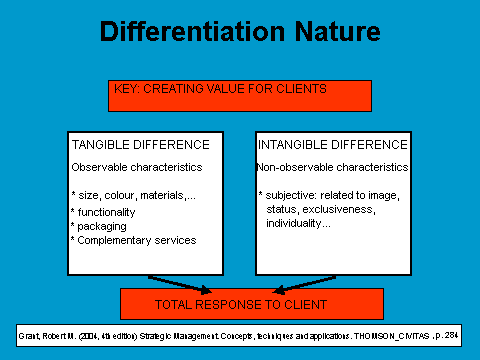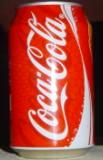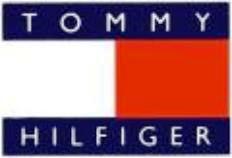DIFFERENTIATION ADVANTAGE
15.- DIFFERENTIATION ADVANTAGE DEFINITION
Once we have analysed the cost advantage for an enterprise and all its considerations, we can start learning about differentiation as a competitive advantage for an enterprise.
Differentiation is making something distinctive or unique for the client. It is making something for which the client is willing to pay more. Porter defined differentiation as:
“something unique, valued by buyers as something more than a low price offer”
Differentiation must take place towards the enterprise as well as towards its clients, as a offer-demand axis. We shall see this later, but we can state that from the point of view of the offer, the enterprise analyses its capability to create a product/service which is unique for its clients, convincing enough for them to pay more for it. This analysis must include the available resources and capabilities, as well as an a deep knowledge of the market, an anticipation to fashion, and the functions this new product/service would satisfy. We have to know its demand exhaustively; its characteristics and needs.
Although every enterprise has the possibility of being different from its competitors (by its product or rendered service, through its sales channel, etc. differentiation can happen in any point in the client-enterprise relationship), enterprises with standardized products have a hard time creating this difference since the physical appearance is the same. In any case, this is a challenge for the rest of the enterprises. If they become different in any aspect, as little as this may be, they could achieve an important competitive advantage against its competitors.
In the end, an enterprise that becomes different from its competitors, or if it makes something they don't do, gains a resource they don't have. Besides, clients value this so much, they are willing to pay more money for it. We shall see three current examples which will clarify this sense of differentiation.

This graphic distinguishes a tangible difference from a non-tangible one. A tangible difference, as its name states it, is something we can see or touch; its colour, shape, material, performance, etc. As an example, we can see the container design for the French perfume Jean Paul Gautier in its masculine version, Le Male.

Differentiation can also be intangible. It comes mainly through the value given to a product or service by clients, and it is not based in a tangible perception. There are other aspects that push a client to buy this product; well beyond its own purpose: social, aesthetic, status, emotional, or other considerations. We can see it in the value of a brand which sales on itself. There are many examples brands, but we will just name these two: Coca Cola andTommy Hilfiger .

